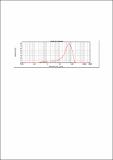Por favor, use este identificador para citar o enlazar a este item:
http://hdl.handle.net/10261/192644COMPARTIR / EXPORTAR:
 SHARE SHARE
 CORE
BASE CORE
BASE
|
|
| Visualizar otros formatos: MARC | Dublin Core | RDF | ORE | MODS | METS | DIDL | DATACITE | |

| Título: | Combined sorbent and catalyst material for sorption enhanced reforming of methane under cyclic regeneration in presence of H2O and CO2 |
Autor: | Di Felice, Luca; Kazi, Saima Sultana; Sørby, Magnus H.; Martínez Berges, Isabel; Grasa Adiego, Gemma CSIC ORCID ; Maury, Delphine; Meyer, Julien | Palabras clave: | H2 production Sorption enhanced reforming CaO-based CO2 sorbent Ni-based reforming catalyst Composite materials Process intensification |
Fecha de publicación: | 8-nov-2018 | Editor: | Elsevier | Citación: | Fuel Processing Technology 183: 35-47 (2018) | Resumen: | An investigation on an innovative calcium‑nickel Combined Sorbent and Catalyst Material (CSCM) for Sorption Enhanced Reforming (SER) of methane is presented in this paper. After hydrothermal synthesis, a nominal 30 wt% CaO-based sorbent supported on mayenite was physically mixed with a commercial reforming catalyst and granulated to obtain bifunctional particles of 200–300 μm. Materials were characterized by powder X-ray diffraction (PXRD), scanning electron microscopy (SEM), Brunauer–Emmett–Teller surface analysis (BET) and Mercury- intrusion prosimetry (Hg-porosimetry). A novel thermo-gravimetric analysis (TGA) approach was employed for investigating SER activity, particularly the materials performance during multicycling methane reforming and sorbent carbonation followed by regeneration in oxidative atmosphere – either in the presence of steam or CO2 at high temperature. When regeneration is carried out in 100 vol% CO2 at 925 °C, an intermediate reduction step between cycles was crucial to maintain the catalytic activity of the CSCM for 100 consecutive sorption-regeneration cycles. In spite of a stable catalytic activity, the initial sorption capacity of the CSCM sorbent function (~16gCO2/100gCSCM) declined progressively with cyclic runs and stabilized at ~10gCO2/100gCSCM from cycle 90 onwards. This decline in capacity has been related to CaO depletion by solid phase reaction with the catalyst support. | Descripción: | 10 Figuras.- 2 Tablas.- 7 Extras | Versión del editor: | http://dx.doi.org/10.1016/j.fuproc.2018.10.012 | URI: | http://hdl.handle.net/10261/192644 | DOI: | 10.1016/j.fuproc.2018.10.012 | ISSN: | 0378-3820 |
| Aparece en las colecciones: | (ICB) Artículos |
Ficheros en este ítem:
| Fichero | Descripción | Tamaño | Formato | |
|---|---|---|---|---|
| ARCHIVO COMODIN DIGITAL CSIC.pdf | 15,38 kB | Adobe PDF |  Visualizar/Abrir | |
| Fuel Pro Tech 183 35-47 (2018)_info sup1.pdf | Información suplementaria | 40,86 kB | Adobe PDF |  Visualizar/Abrir |
| Fuel Pro Tech 183 35-47 (2018)_info sup2.pdf | Información suplementaria | 343,05 kB | Adobe PDF |  Visualizar/Abrir |
| Fuel Pro Tech 183 35-47 (2018)_info sup3.pdf | Información suplementaria | 272,37 kB | Adobe PDF |  Visualizar/Abrir |
| Fuel Pro Tech 183 35-47 (2018)_info sup4.pdf | Información suplementaria | 12,92 kB | Adobe PDF |  Visualizar/Abrir |
| Fuel Pro Tech 183 35-47 (2018)_info sup5.pdf | Información suplementaria | 12,78 kB | Adobe PDF |  Visualizar/Abrir |
| Fuel Pro Tech 183 35-47 (2018)_info sup6.pdf | Información suplementaria | 5,89 kB | Adobe PDF |  Visualizar/Abrir |
| Fuel Pro Tech 183 35-47 (2018)_info sup7.pdf | Información suplementaria | 5,16 kB | Adobe PDF |  Visualizar/Abrir |
CORE Recommender
SCOPUSTM
Citations
23
checked on 31-mar-2024
WEB OF SCIENCETM
Citations
22
checked on 20-feb-2024
Page view(s)
270
checked on 19-abr-2024
Download(s)
369
checked on 19-abr-2024
Google ScholarTM
Check
Altmetric
Altmetric
NOTA: Los ítems de Digital.CSIC están protegidos por copyright, con todos los derechos reservados, a menos que se indique lo contrario.
